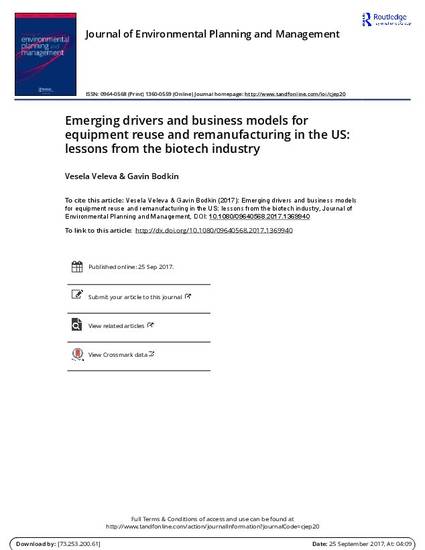
Article
Emerging drivers and business models for equipment reuse and remanufacturing in the US lessons from the biotech industry-2017.pdf
Environmental Planning and Management
(2017)
Abstract
While regulations have advanced product take-back in some markets, challenges to increasing product reuse and remanufacturing remain. Most research to date has focused on original equipment manufacturers (OEMs) taking back and remanufacturing their products, which is often problematic. The present study demonstrates that there are emerging opportunities for small companies with innovative business models to enter the market and advance product end-of-life (EoL) management. The paper examines the biotechnology industry – a growing sector with high spending on lab equipment and relatively short lifespans of R&D instruments. Building on previous research and analysis of industry practices and emerging drivers for product reuse and remanufacturing, the authors propose a framework for sustainable EoL management that includes five managerial drivers: financial benefits, space, ease/convenience, information, and sustainability goals. The paper concludes with discussion of the lessons learned and practical implications for managers in charge of purchasing or disposing of surplus equipment.
Keywords
- Product reuse,
- remanufacturing,
- sustainability,
- circular economy,
- biotech industry
Disciplines
Publication Date
Fall September, 2017
DOI
http://www.tandfonline.com/doi/full/10.1080/09640568.2017.1369940
Citation Information
Vesela R. Veleva and Gavin Bodkin. "Emerging drivers and business models for equipment reuse and remanufacturing in the US lessons from the biotech industry-2017.pdf" Environmental Planning and Management (2017) Available at: http://works.bepress.com/vesela-veleva/4/
